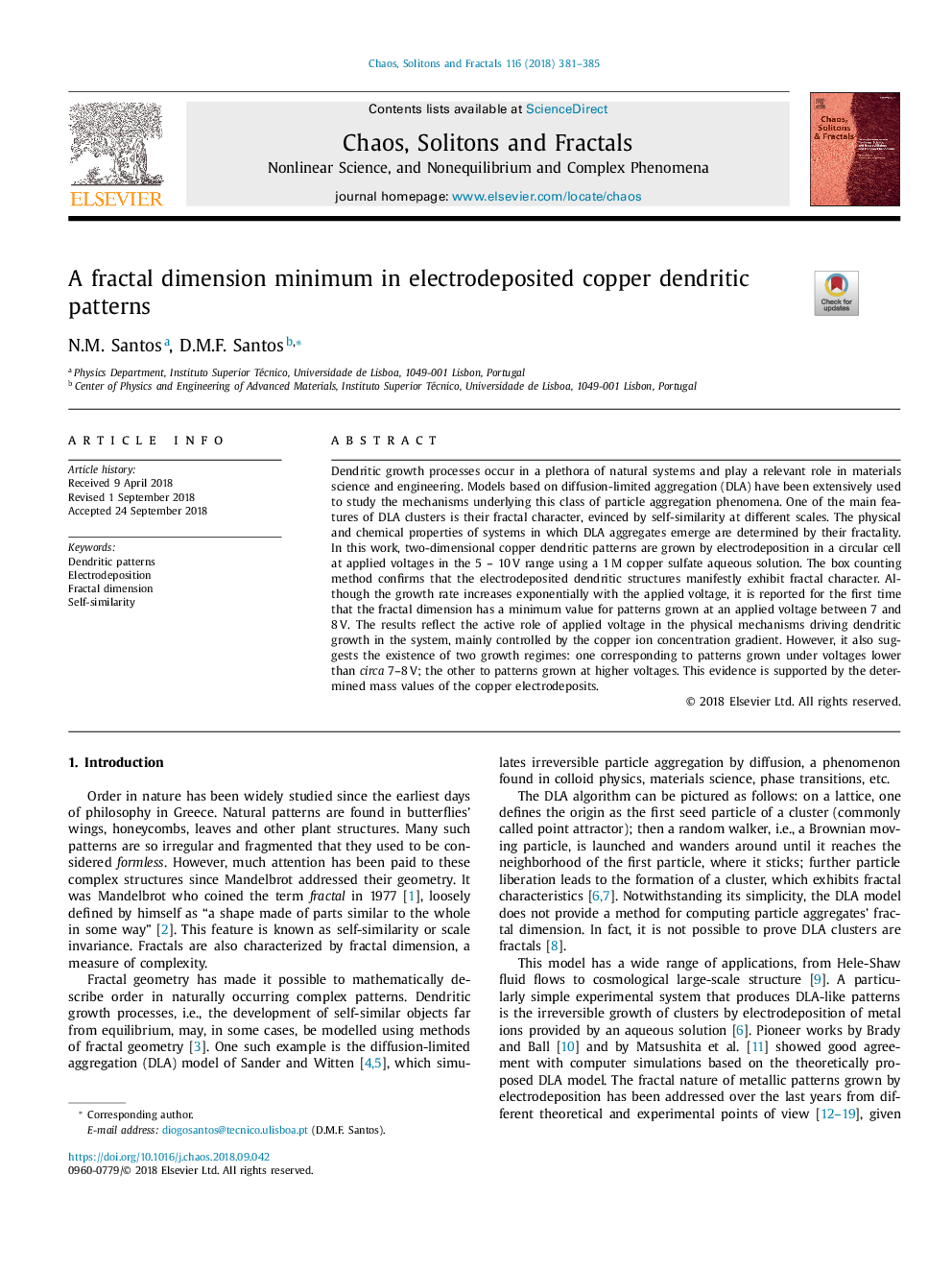| Article ID | Journal | Published Year | Pages | File Type |
|---|---|---|---|---|
| 11026235 | Chaos, Solitons & Fractals | 2018 | 5 Pages |
Abstract
Dendritic growth processes occur in a plethora of natural systems and play a relevant role in materials science and engineering. Models based on diffusion-limited aggregation (DLA) have been extensively used to study the mechanisms underlying this class of particle aggregation phenomena. One of the main features of DLA clusters is their fractal character, evinced by self-similarity at different scales. The physical and chemical properties of systems in which DLA aggregates emerge are determined by their fractality. In this work, two-dimensional copper dendritic patterns are grown by electrodeposition in a circular cell at applied voltages in the 5 - 10â¯V range using a 1â¯M copper sulfate aqueous solution. The box counting method confirms that the electrodeposited dendritic structures manifestly exhibit fractal character. Although the growth rate increases exponentially with the applied voltage, it is reported for the first time that the fractal dimension has a minimum value for patterns grown at an applied voltage between 7 and 8â¯V. The results reflect the active role of applied voltage in the physical mechanisms driving dendritic growth in the system, mainly controlled by the copper ion concentration gradient. However, it also suggests the existence of two growth regimes: one corresponding to patterns grown under voltages lower than circa 7-8â¯V; the other to patterns grown at higher voltages. This evidence is supported by the determined mass values of the copper electrodeposits.
Related Topics
Physical Sciences and Engineering
Physics and Astronomy
Statistical and Nonlinear Physics
Authors
N.M. Santos, D.M.F. Santos,
